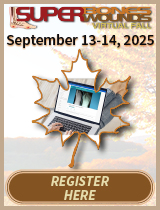From: Robert Scott Steinberg, DPM
I find it interesting that a number of my colleagues who promote running around barefoot did not experience treating patients presenting with "COVID-19" feet during the shutdown and after, among those who continue working from home barefoot.
Has anyone studied whether people with excessive pronation who take up walking barefoot rebuild their arches? Does walking or running in stability shoes, with prescription functional orthotics, cause all the intrinsic muscles in the foot to relax and not get a workout?
Robert Scott Steinberg, DPM, Schaumburg, IL
From: Amol Saxena, DPM, MPH
My colleague Rob Conenello was quoted in a publication about walking barefoot indoors as a good way to strengthen feet. This apparently is controversial among colleagues. One thing to remember is that writers often look for “sound bites” and not all responses are complete. For instance, I am sure Rob did not want to encourage those with current conditions such as plantar fasciitis, plantar wounds, or neuropathy to go unshod.
Barefoot exercises and even a small amount of running on grass are great ways of strengthening feet. Many top track and field coaches including Golden Foot winner Brooks Johnson U.S. Olympic Coach (RIP) encouraged this. Some more research is needed on what is the optimum amount of time, and perhaps why some cultures have less foot issues if they spend a lot of time barefoot. Another thing to consider is that we use boots or casts for a period of time, and then through rehab we progress people out of them. Using devices such as a Blackboard and techniques like Spiral dynamics are helpful in the rehab process for many of my elite athletes.
Amol Saxena, DPM, MPH, Palo Alto, CA
From: Pete Harvey, DPM
Thank you, Dr. Gurnick. During my 55 years of practice, I too have used almost every procedure for onychocryptosis, including radio ablation. But, in the ‘70s, I settled on the phenol procedure; not the PA or phenol/alcohol procedure. Following removal of the offending nail portion, I apply 88% phenol for 30 seconds and then dry the groove. Then I repeat this one time. I don’t apply alcohol at that time. I instruct the patient to remove the dressing (4 snug 1” Band-Aids) one hour before bedtime, pour alcohol on the snug dressing, and wait 5-10 minute to loosen the adhesive; then clean the toe with isopropyl alcohol. Then apply a fresh BandAid but fairly loose and not tight; then remove that dressing the next morning and shower without the dressing. Then clean the toe with alcohol again and apply the Band-Aid dressing. The third day should require no further dressing.
I instruct the patient to allow air to the toe as much as possible by wearing a cut-out shoe or a sandal. Then apply alcohol directly to the toe twice a day (drying agent). Apply no ointments or creams and only alcohol. I allow no soaks unless there is pain which is rare. Constant air exposure allows the toe to heal faster. Shower only with no tub baths, etc. Most toes heal in 3-4 weeks some longer. People required to wear closed shoes or steel toes will take longer to heal so I recommend doing the procedure on vacation time. I do not routinely Rx antibiotics unless the patient is compromised with brittle diabetes or poor circulation. Operating on a compromised patient is a judgment call and I will not operate on many of these cases.
Pete Harvey, DPM, Wichita Falls, TX







